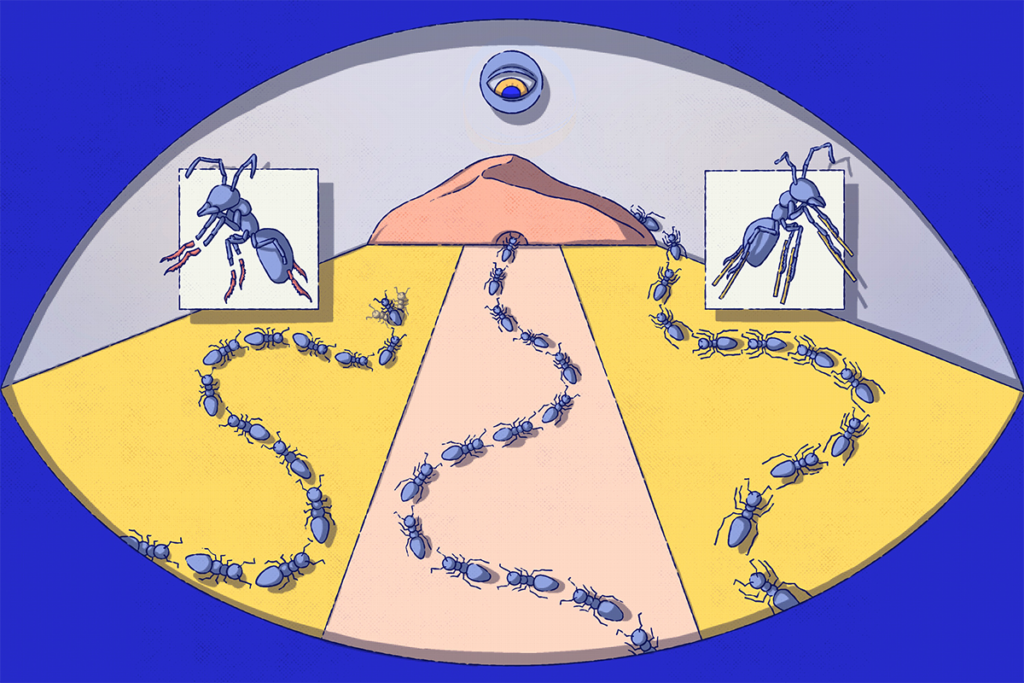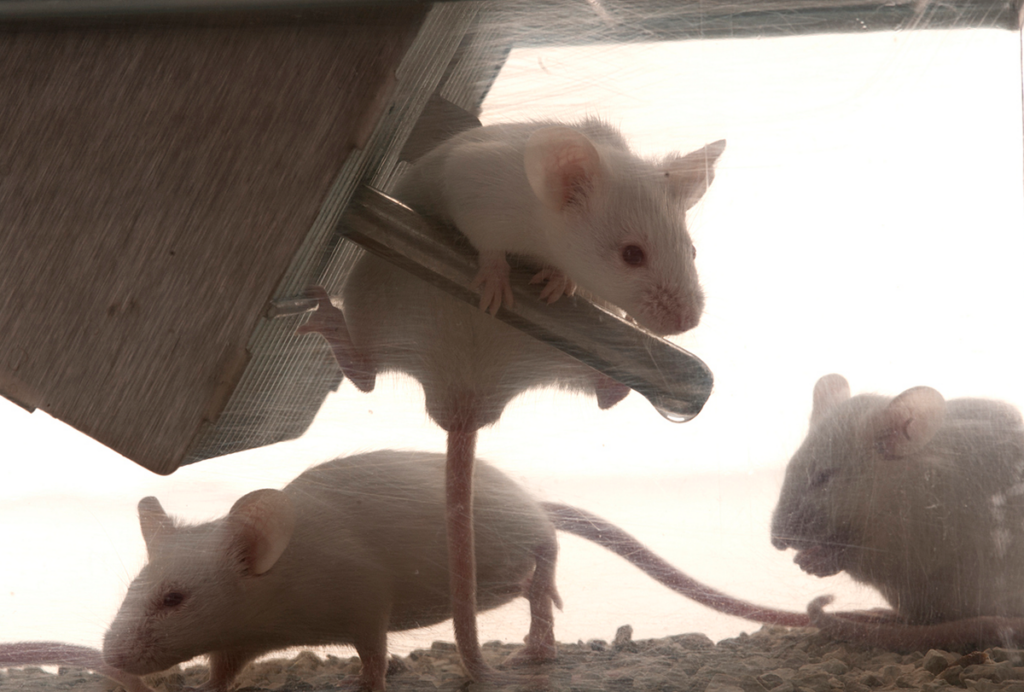SFN 2015
Recent articles
Neuron tag may shield synapses from brain’s pruning shears
A protective molecular tag on neurons can prevent microglia, the brain’s immune cells, from trimming away their connections with other neurons.
Neuron tag may shield synapses from brain’s pruning shears
A protective molecular tag on neurons can prevent microglia, the brain’s immune cells, from trimming away their connections with other neurons.
Three autism mouse models marked by defects in same circuit
Problems with social interactions stem from faulty wiring of a single circuit spanning distant brain regions, results from three mouse models of autism suggest.
Three autism mouse models marked by defects in same circuit
Problems with social interactions stem from faulty wiring of a single circuit spanning distant brain regions, results from three mouse models of autism suggest.
Network analysis gives clues to other ailments in autism
Genes linked to autism are associated with a variety of other ailments, including cancer, heart conditions, autoimmune disorders and gut problems.
Network analysis gives clues to other ailments in autism
Genes linked to autism are associated with a variety of other ailments, including cancer, heart conditions, autoimmune disorders and gut problems.
Maternal immune molecule triggers autism symptoms in male mice
Rare antibodies taken from the blood of women who have a child with autism cause brain structure changes and autism-like symptoms in male mice.

Maternal immune molecule triggers autism symptoms in male mice
Rare antibodies taken from the blood of women who have a child with autism cause brain structure changes and autism-like symptoms in male mice.
Over-synched brains trigger out-of-step social behavior
People with autism show excessively synchronized activity between brain regions while conversing with others.

Over-synched brains trigger out-of-step social behavior
People with autism show excessively synchronized activity between brain regions while conversing with others.
Male mice more vulnerable to tilt of gut-brain axis
Early disruption of the microbes that inhabit the gut can alter a mouse’s sociability long term.

Male mice more vulnerable to tilt of gut-brain axis
Early disruption of the microbes that inhabit the gut can alter a mouse’s sociability long term.
For autism mouse models, gender matters
The mutation that leads to Angelman syndrome may affect the brains of female mice more severely than those of male mice.

For autism mouse models, gender matters
The mutation that leads to Angelman syndrome may affect the brains of female mice more severely than those of male mice.
Autism model reveals brain processes behind ‘super’ skills
Structural changes in the connections between neurons may underlie the enhanced learning and motor skills of a mouse model of autism.

Autism model reveals brain processes behind ‘super’ skills
Structural changes in the connections between neurons may underlie the enhanced learning and motor skills of a mouse model of autism.
One form of immune gene tracks with autism traits
A variant in a gene that regulates immune responses is more common in children with autism than in those without this disorder.

One form of immune gene tracks with autism traits
A variant in a gene that regulates immune responses is more common in children with autism than in those without this disorder.
Prairie vole study digs up link between Prozac, oxytocin
Prairie vole pups exposed to the antidepressant fluoxetine in the womb show autism-like behaviors and lose some receptors for oxytocin and vasopressin.

Prairie vole study digs up link between Prozac, oxytocin
Prairie vole pups exposed to the antidepressant fluoxetine in the womb show autism-like behaviors and lose some receptors for oxytocin and vasopressin.
Explore more from The Transmitter
This paper changed my life: John Tuthill reflects on the subjectivity of selfhood
Wittlinger, Wehner and Wolf’s 2006 “stilts and stumps” Science paper revealed how ants pull off extraordinary feats of navigation using a biological odometer, and it inspired Tuthill to consider how other insects sense their own bodies.

This paper changed my life: John Tuthill reflects on the subjectivity of selfhood
Wittlinger, Wehner and Wolf’s 2006 “stilts and stumps” Science paper revealed how ants pull off extraordinary feats of navigation using a biological odometer, and it inspired Tuthill to consider how other insects sense their own bodies.
Some facial expressions are less reflexive than previously thought
A countenance such as a grimace activates many of the same cortical pathways as voluntary facial movements.

Some facial expressions are less reflexive than previously thought
A countenance such as a grimace activates many of the same cortical pathways as voluntary facial movements.
Cracking the neural code for emotional states
Rather than act as a simple switchboard for innate behaviors, the hypothalamus encodes an animal's internal state, which influences behavior.

Cracking the neural code for emotional states
Rather than act as a simple switchboard for innate behaviors, the hypothalamus encodes an animal's internal state, which influences behavior.